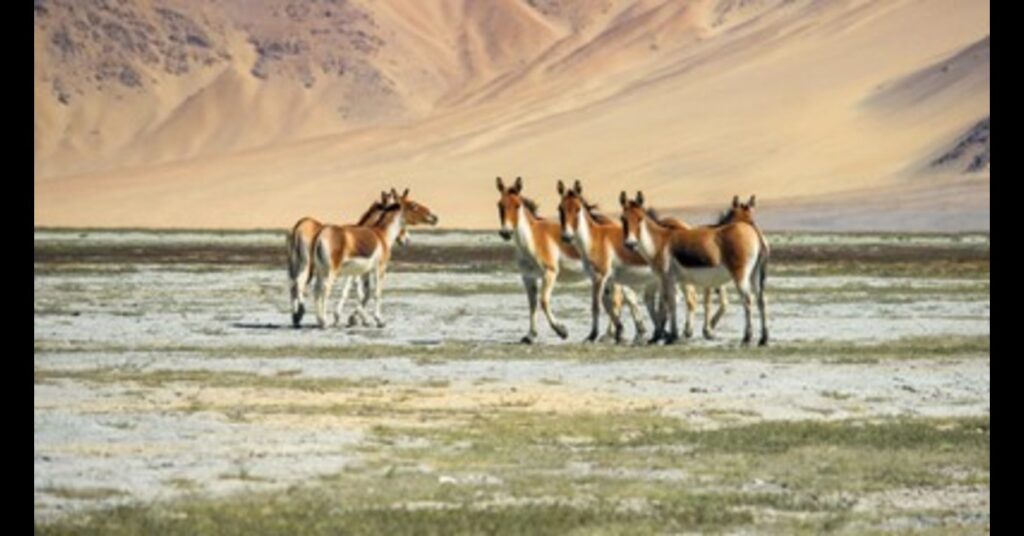India’s diverse geography is home to an extraordinary range of flora and fauna, making it a haven for nature enthusiasts and wildlife lovers. With over 100 national parks scattered across the country, each offers a unique experience, from spotting majestic Bengal tigers in dense forests to witnessing rare bird species in wetlands. These protected areas not only preserve India’s ecological heritage but also provide an unparalleled opportunity to connect with nature. Whether you’re an adventure seeker, a wildlife photographer, or someone looking to escape the urban chaos, exploring India’s national parks promises an unforgettable journey. This blog highlights the best national parks to visit in India and why they are worth adding to your travel list.
Best National Parks to Visit in India
1. Jim Corbett National Park, Uttarakhand

Established in 1936, Jim Corbett is India’s oldest national park and a sanctuary for Bengal tigers. Spread over 520 square kilometres, the park offers lush landscapes, ranging from hills and grasslands to rivers. Jeep safaris provide visitors with an excellent chance to witness tigers, leopards, elephants, and over 600 bird species.
2. Ranthambore National Park, Rajasthan

Ranthambore is famed for its majestic tigers, often spotted near ancient ruins within the park. The juxtaposition of wildlife with historical forts adds a unique charm. A visit here guarantees a memorable safari experience with plenty of opportunities for tiger sightings.
3. Kaziranga National Park, Assam

A UNESCO World Heritage Site, Kaziranga is renowned for its one-horned rhinoceros population. It also hosts elephants, wild buffaloes, and swamp deer. The park’s lush green surroundings and Brahmaputra River backdrops make it a photographer’s paradise.
4. Bandhavgarh National Park, Madhya Pradesh

Known for having the highest density of tigers in India, Bandhavgarh also boasts a rich history with its ancient fort and sculptures. The park’s dense forests and grasslands are teeming with wildlife, including leopards and sloth bears.
5. Sundarbans National Park, West Bengal

Famous for its mangrove forests and the elusive Royal Bengal tiger, Sundarbans is an adventurer’s dream. Boat safaris through the winding waterways offer a serene yet thrilling way to explore this UNESCO World Heritage Site.
6. Periyar National Park, Kerala

Situated around a picturesque lake, Periyar is a haven for elephants. Visitors can enjoy boat cruises, bamboo rafting, and trekking while marvelling at the region’s biodiversity.
7. Gir National Park, Gujarat

Gir is the only place in the world where you can see the Asiatic lion. With its rugged terrain and dry deciduous forests, this park is a gem for wildlife enthusiasts.
8. Kanha National Park, Madhya Pradesh

The inspiration behind Rudyard Kipling’s The Jungle Book, Kanha is known for its vast meadows and healthy tiger population. The park also shelters barasingha, an endangered deer species.
9. Nagarhole National Park, Karnataka

Part of the Nilgiri Biosphere Reserve, Nagarhole features dense forests and a diverse range of wildlife. It’s especially known for its thriving elephant population.
10. Hemis National Park, Ladakh

Hemis is the highest national park in India and is famous for its snow leopards. Trekking through its barren yet stunning landscapes offers a chance to see this rare predator in its natural habitat.
Conclusion
India’s national parks are not just about wildlife; they are a testament to the country’s rich biodiversity and commitment to conservation. Each park tells its own story through its unique ecosystems and species. Whether you’re looking for adventure, tranquillity, or an educational experience, visiting these parks ensures a connection with nature like never before. So, pack your bags, embark on a safari, and immerse yourself in the wild wonders of India.
Frequently Asked Questions
1. Which is the best time to visit India’s national parks?
Most parks are best visited between October and March, as the weather is cooler, and wildlife sightings are more frequent.
2. Do I need a permit to enter national parks in India?
Yes, permits are required and can be obtained online or at the park’s entrance. Charges vary depending on the park and activities like safaris.
3. Are there accommodations near national parks?
Yes, many parks have nearby resorts, lodges, and budget accommodations to suit different preferences.
4. What activities can I do in national parks?
Common activities include jeep safaris, boat rides, trekking, birdwatching, and photography. Some parks also offer camping experiences.
5. Which national park is best for spotting tigers?
Bandhavgarh and Ranthambore National Parks are highly recommended for tiger sightings due to their dense tiger populations.











